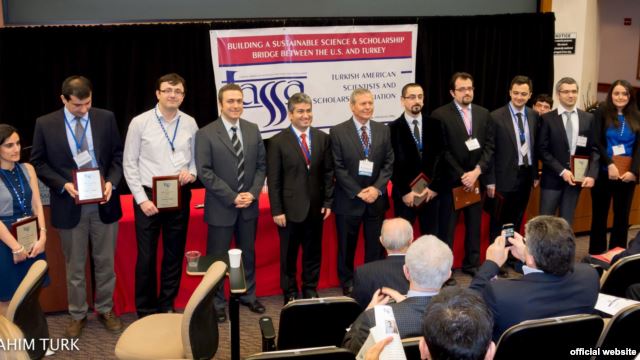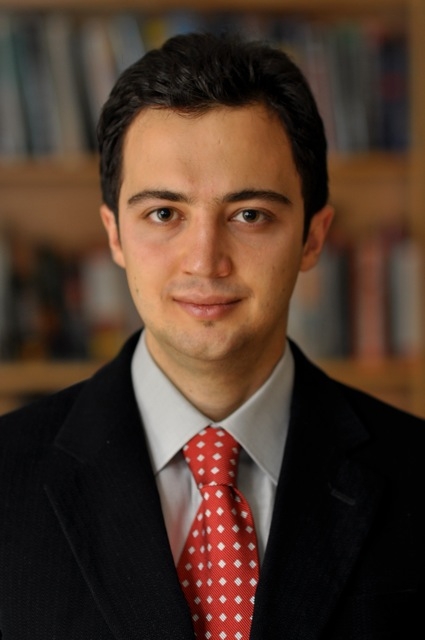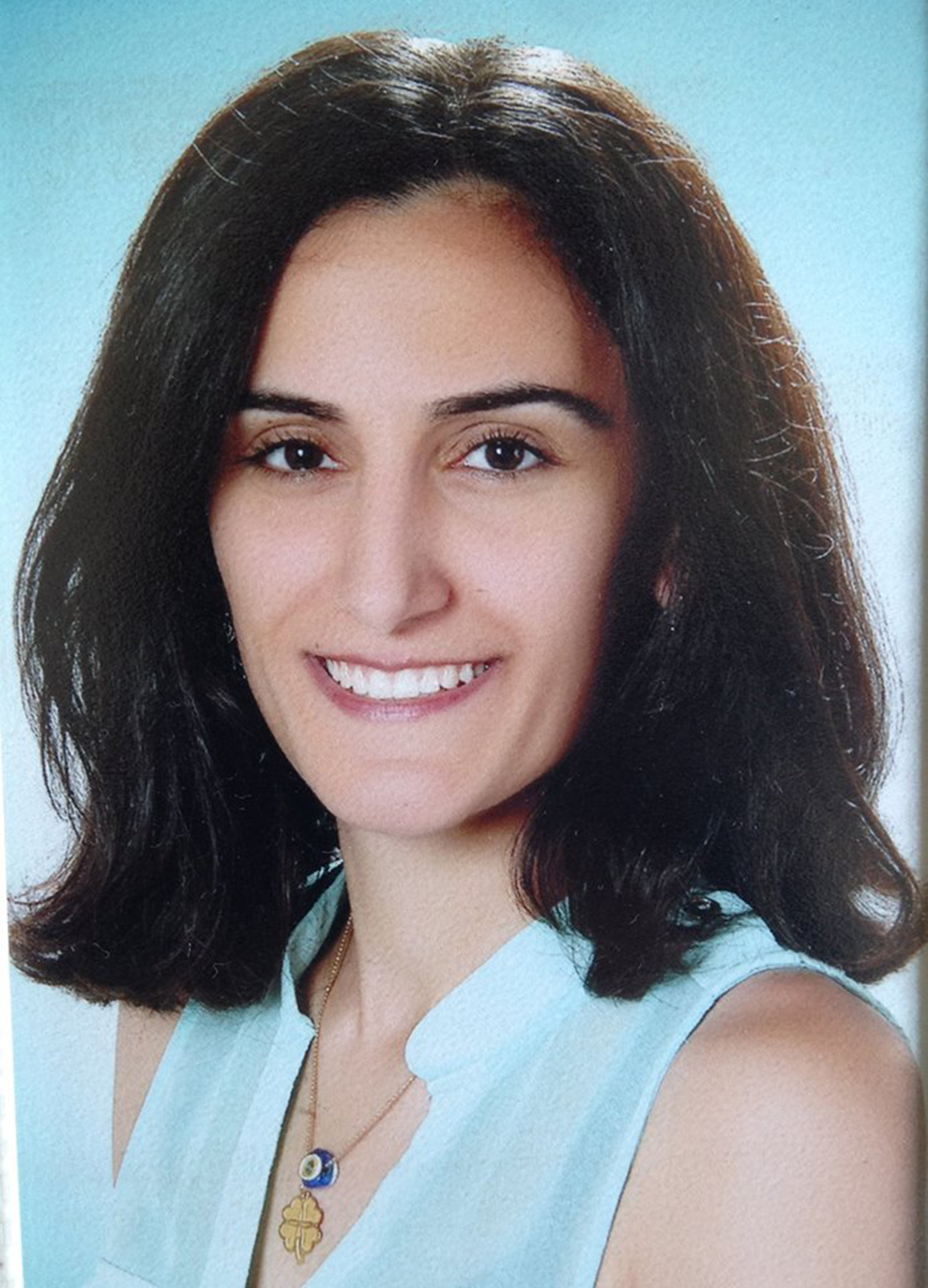TASSA 2014 Conference Young Scholar Award Winners
TASSA launched a new award to recognize and honor the achievements of young Turkish American scientists and scholars, namely the TASSA Young Scholar Awards. Eight junior scholars as the inaugural winners of this prestigious award received their plaque from the President of the Scientific and Technological Research Council of Turkey (TUBITAK), Yucel Altunbasak.
YOUNG SCHOLAR AWARD WINNER IN JUNIOR FACULTY LEVEL
ERTUĞRUL ÇUBUKÇU
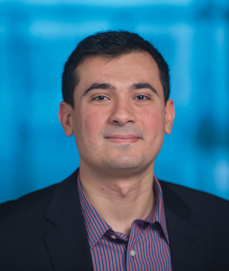
Ertugrul Cubukcu received his B.S. and M.S. degrees both in physics from Bilkent University, Turkey and his Ph.D. degree in applied physics from Harvard University. Following his postdoctoral work at the University of California, Berkeley, he has joined the faculty at the University of Pennsylvania in 2011, where he is currently an assistant professor of Material Science and Engineering and, by courtesy, Electrical and Systems Engineering.
He is the author or coauthor of over 50 journal and conference papers, which have been referenced over 2300 times. His group explores the nanoscale Opto-electro-mechanical devices and sensors that utilize the unique features of nanoantennas and two-dimensional materials. His work has been featured in Optics and Photonics News, MIT Technology Review, Newsweek, Nature Photonics, and Laser Focus World. He is the recipient of the 2014 IEEE Photonics Society Young Investigator Award.
LIGHT ON THE EXTREME LIMIT
In this talk, we will discuss how light interacts with matter on extremely short length scales, that is the nanoscale. Our group explores optical properties of materials that consist of nanoscale functional elements. As an example, we will describe how an opaque metal mirror surface becomes a colorful transparent glass window if engineered on the nanoscale. We will also elaborate on the implications of these effects on night vision cameras as well as medical diagnostics through optical biomarker detection.
YOUNG SCHOLAR AWARD WINNER IN JUNIOR FACULTY LEVEL
ALP ŞIMŞEK
Alp Simsek is Rudi Dornbusch Career Development Assistant Professor of Economics at Massachusetts Institute of Technology. He is also affiliated with the National Bureau of Economic Research. Alp grew up in Antalya, Turkey. He won a silver medal for Turkey in the International Mathematics Olympiad in 2010, and graduated in the same year from the Izmir Science High School. He came to the US to pursue his undergraduate studies at MIT. He received his B.S. degrees in mathematics and computer science, and his master’s degree in engineering, before switching to economics. He received his economics Ph.D. degree in 2010 also from MIT, while winning the MIT Robert Solow award for excellence in research and teaching in economics. He worked as an assistant professor of economics at Harvard University for a few years, before returning to his alma mater as faculty in 2013. His research fields are finance and macroeconomics, with a recent focus on understanding financial crises and their impact on the economy. His work has been published in leading scholarly journals, including Econometrica, Quarterly Journal of Economics, and the Journal of Finance.
UNCERTAINTY AND FINANCIAL MARKETS
Abstract: The recent subprime crisis in the US was a dramatic illustration of how financial markets can malfunction, and how their failure can create considerable damage in the non-financial sectors. The problems in financial markets are often associated with uncertainty and how economic agents deal with it. In one strand of my research, I emphasize that uncertainty naturally induces economic agents to have different beliefs, and explore the impact of the resulting belief disagreements for asset prices and financial contracts. I show that belief disagreements can lead to asset price bubbles financed by credit—along the lines of the recent housing bubble in the US. Belief disagreements also naturally induce economic agents to speculate on their different views. I demonstrate that speculation creates a powerful force by which new financial assets (such as mortgage backed securities and their derivatives) can increase the risks in financial markets---in stark contrast with the traditional view of financial innovation. In another strand of my research, I show that uncertainty is dramatically amplified during financial crises due to the complexity of the linkages between modern financial institutions. My analysis provides a rationale for government policies that reduce uncertainty and complexity during crises---including bailouts of large financial institutions.
YOUNG SCHOLAR AWARD WINNER IN JUNIOR FACULTY LEVEL
AHMET YILDIZ
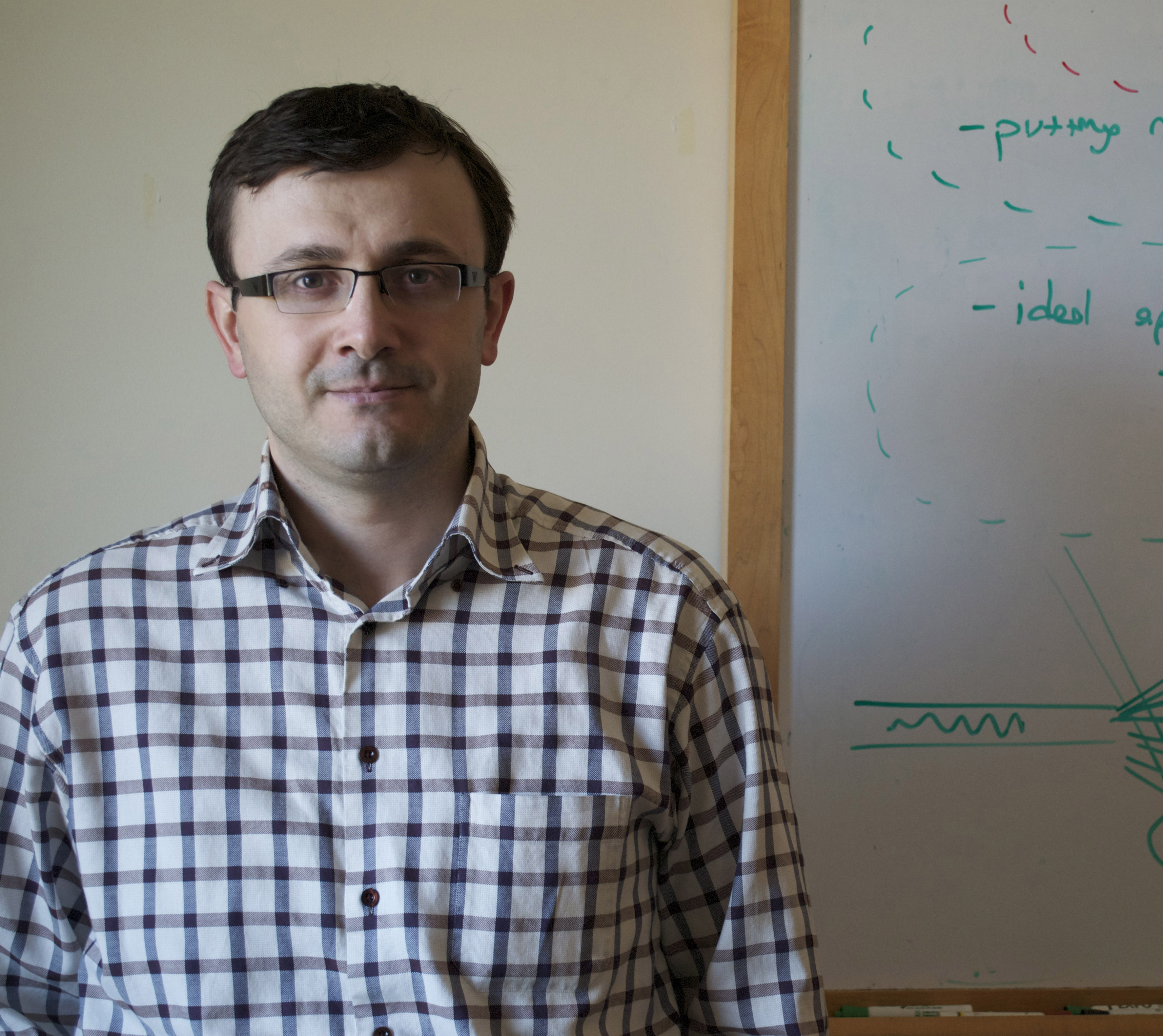
Ahmet Yildiz grew up in Sakarya, Turkey. In 2001, he received a bachelor’s degree in physics from Bogazici University and started his graduate studies in biophysics at the University of Illinois Urbana-Champaign. He developed a microscopy technique, which can track fluorescently-labeled molecules inside cells with one-nanometer accuracy. Using this method, he showed that molecular motors that carry cargos inside cells move by taking alternating steps, similar to human walking. His doctoral work was recognized with a Foresight Institute Distinguished Student Award, the Gregorio Weber International Prize in Biological Fluorescence and Young Scientist Award by Science Magazine in 2005. After completion of his Ph.D., Dr. Yildiz performed postdoctoral research with Ronald Vale at the University of California, San Francisco. His postdoctoral work is supported with Burroughs Wellcome and Jane Coffin Childs Fellowships. In 2008, he joined the Physics department at the University of California Berkeley. He recently received the NSF CAREER Award, Presidential Early Career Award, Sloan Fellowship and Ellison Medical Foundation Young Investigator Award. His lab develops biophysical approaches to study fundamental biological processes, such as cargo transport, organelle development and genomic integrity at a single molecule level.
LOOKING UNDER THE HOOD OF MOLECULAR MOTORS
Motor proteins play an important role in transporting vital cargos inside cells by walking along networks of filamentous structures called actin and microtubules. The way individual proteins can travel long distances along linear track in a unidirectional manner is a fundamental biological question. I developed state-of-the-art imaging methods that can track the movement of a single motor with one nanometer accuracy. We found that kinesin and myosin motors move in a coordinated manner similar to human walking, whereas dynein motors behave as drunken sailors. By engineering the mechanical properties of the motors and testing their motility under optical tweezers, we revealed the mechanism by which motors produce force, move in a particular direction along their track and transport their cargo.
YOUNG SCHOLAR AWARD WINNER IN POSTDOCTORAL LEVEL
KIVANÇ BIRSOY
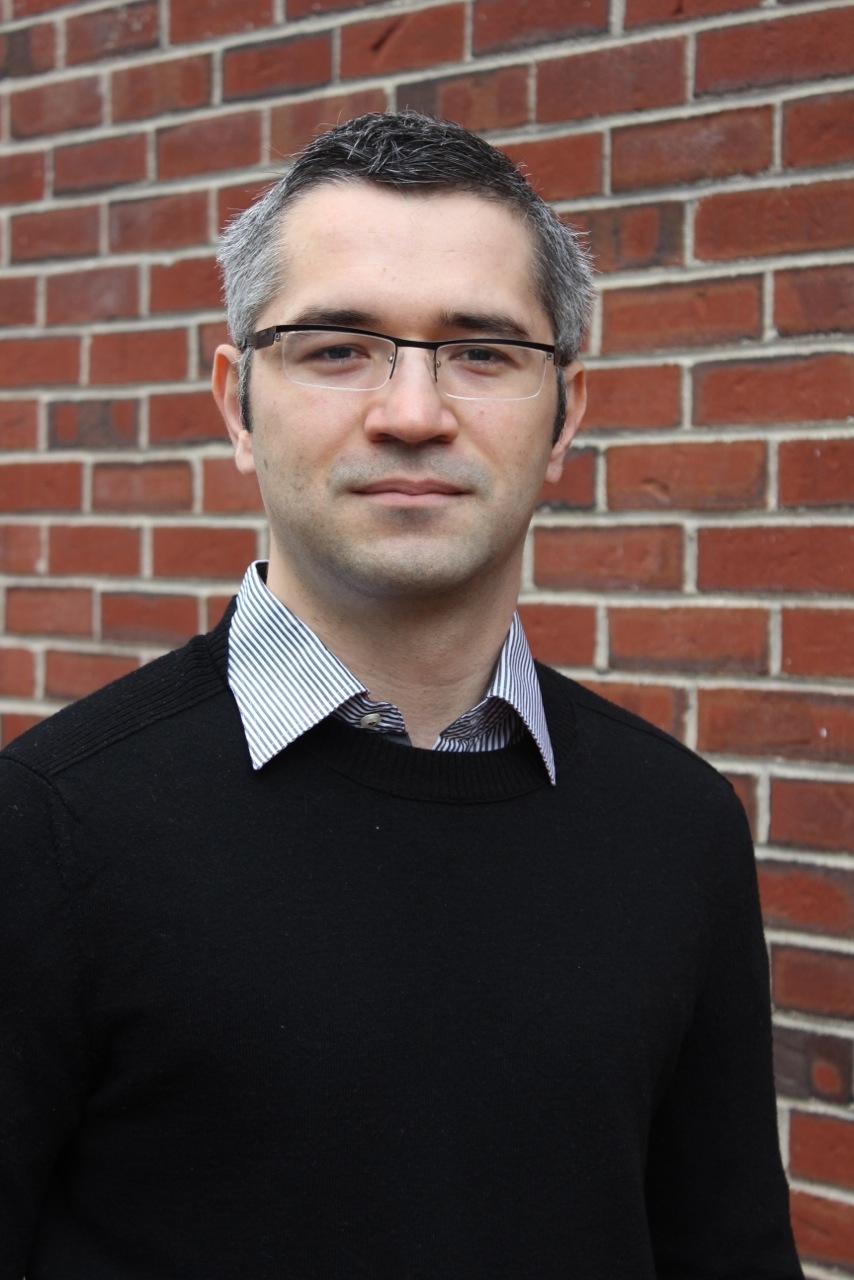
CANCER METABOLISM: A NEW TWIST IN CANCER THERAPY
Targeted therapies are transforming the way tumors with specific genetic abnormalities are treated. However, the effectiveness of these therapies is currently limited, as the majority of the patients develop drug resistance over the course of the treatment. This calls the need for identifying alternative strategies targeting unique features of cancer cells other than genetic alterations. Energy and nutrient metabolism in cancer cells in a solid tumor is likely to be different than in normal cells and thus represent a potential point of attack for cancer therapy. Cancer cells grow and proliferate at rates far higher than most other cells in an adult, creating a demand for the building blocks of macromolecules that is not shared by most normal cells. Additionally, cancer cells adapt their energy demands and metabolism to survive in the tumor environment that is poor in nutrients. Systematic identification of cancer specific metabolic features and nutrient requirements would likely lead to novel nutrient/diet based therapies, which would arguably support current targeted and standard anti-cancer therapies.
YOUNG SCHOLAR AWARD WINNER IN POSTDOCTORAL LEVEL
DUYGU KUZUM
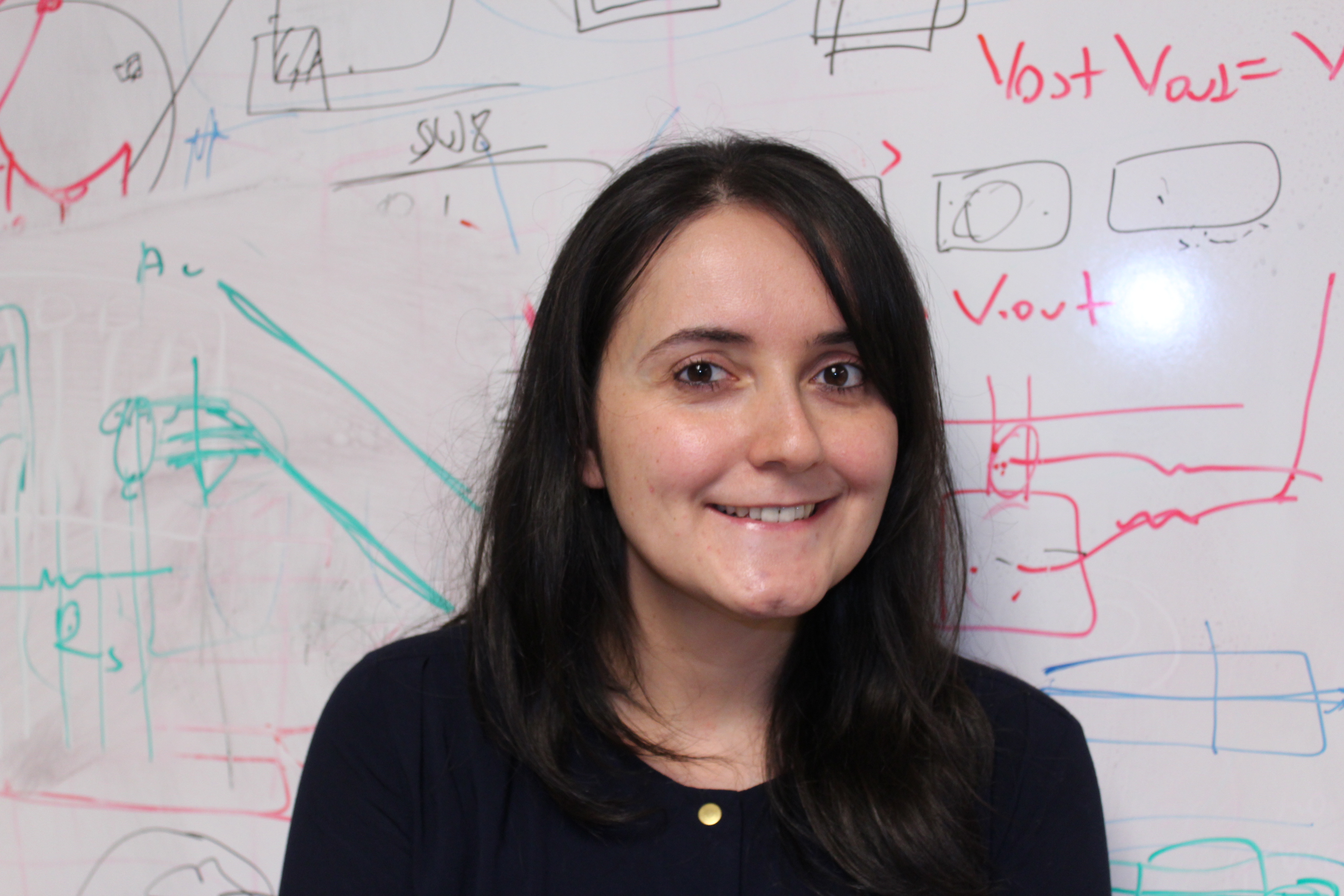
Duygu Kuzum is developing nanoelectronic synaptic devices emulating the synaptic computation and plasticity in the human brain. This technology could lead to portable, energy-efficient, adaptable and interactive computer systems that can learn and process information in real time similar to the human brain. She is also focusing on interfacing nanoelectronic synapses with biological neurons to build hybrid biocomputation platforms, which will revolutionize our understanding of neural circuits in the brain and which may eventually lead to neural prosthetic devices repairing impaired neural circuits. She applies innovations in nanoelectronics and materials science to develop new technologies, which will help to better understand circuit-level computation in the brain and develops novel tools to probe neural circuits with high spatial and temporal resolution.Her work on nanoelectronic devices was featured on the cover of Nano Letters, highlighted in Nature and covered by several media outlets (New Scientist, Stanford News Report, Nanowerk, EE Times).
ELECTRONIC SYNAPTIC DEVICES
In this talk, I will introduce a new approach and a novel electronic device inspired from biological synapses in the brain. I will discuss several aspects of brain computation, including energy efficiency, robustness and parallelism and compare with state-of-the-art super computers. Then I will explain how we can use synaptic devices to understand brain computation.
YOUNG SCHOLAR AWARD WINNER IN POSTDOCTORAL LEVEL
BURAK OKUMUŞ
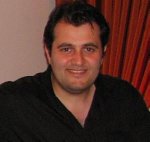
Burak Okumus is a post-doctoral research associate and Novartis fellow in Johan Paulsson’s lab at the Department of Systems Biology at Harvard Medical School, developing methods to understand non-genetic, non-environmental cell-to-cell variability. In particular, he is employing microfluidics and imaging towards achieving: (1) high-throughput/automated microscopy, and (2) counting of low-copy number proteins in single-cells.
Following a bachelor’s degree in physics at Bilkent University, Ankara, Turkey, Dr. Okumus received his Ph.D. in Biophysics and Computational Biology from University of Illinois at Urbana-Champaign. During his graduate studies, he worked with Taekjip Ha, where he used liposomes to realize novel platforms for in-vitro single-molecule fluorescence microscopy.
INDIVIDUALITY IN BIOLOGY: WHAT DO FAT, RUBBER AND LEGO HAVE IN COMMON?
It goes without saying that living matter consists of an overwhelmingly vast number of specialized cell types and molecules to carry out vital functions. However, (perhaps just to make the question of what life is more challenging to answer) there have been findings in the past decade demonstrating that [nominally] identical biological molecules and cells – residing even within the same environment – may display marked differences in their behavior. In my talk, I will try to explain the causes, and consequences of this individuality in biology, as well as the means to study it, showcasing a few specific examples. In crude analogy, this is akin to twin studies in psychology, namely understanding why and how identical twins raised in the same family may behave differently despite the same genetics and the environment (i.e. Both nature and nurture) they share. I will also elaborate on the experimental techniques I have developed in my doctoral and postdoctoral work to understand such heterogeneity in biological systems – albeit not for twins, but for single molecules and single cells.
YOUNG SCHOLAR AWARD WINNER IN GRADUATE LEVEL
CANAN DAĞDEVIREN
Canan Dagdeviren was born on 4th of May, 1985 in Istanbul. She has been fascinated by science ever since she was a child. By the influence of Prof. Erdal İnönü, she decided to study physics and obtained her B.Sc. in Physics Engineering from Hacettepe University. She was awarded with full-scholarship throughout her M.Sc. studies in Materials Science and Engineering at Sabanci University. Dagdeviren was the top of the list in her field to be entitled to a Fulbright Doctoral Fellow, which was given for the first time in Turkey in 2009, and she pursues her Ph.D. in Material Science and Engineering at the University of Illinois at Urbana-Champaign under supervision of Prof. John A. Rogers. The primary focuses of her research are applications of ferroelectric/piezoelectric materials and patterning techniques for unusual electronics with an emphasis on bio-inspired and bio-integrated systems, such as bio-sensors, actuators, transducers, and mechanical energy harvesters in flexible/stretchable forms. She is expected to receive her Ph.D. in June, 2014. Dagdeviren serves as a research assistant in Frederick Seitz Materials Research Laboratory, Beckman Institute for Advanced Science and Technology. Currently, she has 12 journal papers, is inventor on 2 patent applications, and holds over 25 prestigious awards.
CONFORMAL PIEZOELECTRIC ENERGY HARVESTING AND STORAGE FROM MOTIONS OF THE HEART, LUNG AND DIAPHRAGM
In this study, we report advanced materials and devices that enable high efficiency mechanical to electrical energy conversion from the natural contractile and relaxation motion of the heart, lung and diaphragm, demonstrated in several different animal models, each of which has organs with sizes that approach human scales. A co-integrated collection of such energy harvesting elements with rectifiers and microbatteries provides an entire flexible system, capable of viable integration with the beating heart via medical sutures and operation with efficiencies of ~2%. Additional experiments, computational models and results in multilayer configurations capture the key behaviors, illuminate essential design aspects and offer sufficient power outputs for operation of pacemakers, with or without battery assist.
YOUNG SCHOLAR AWARD WINNER IN GRADUATE LEVEL
ÖMER DURAK
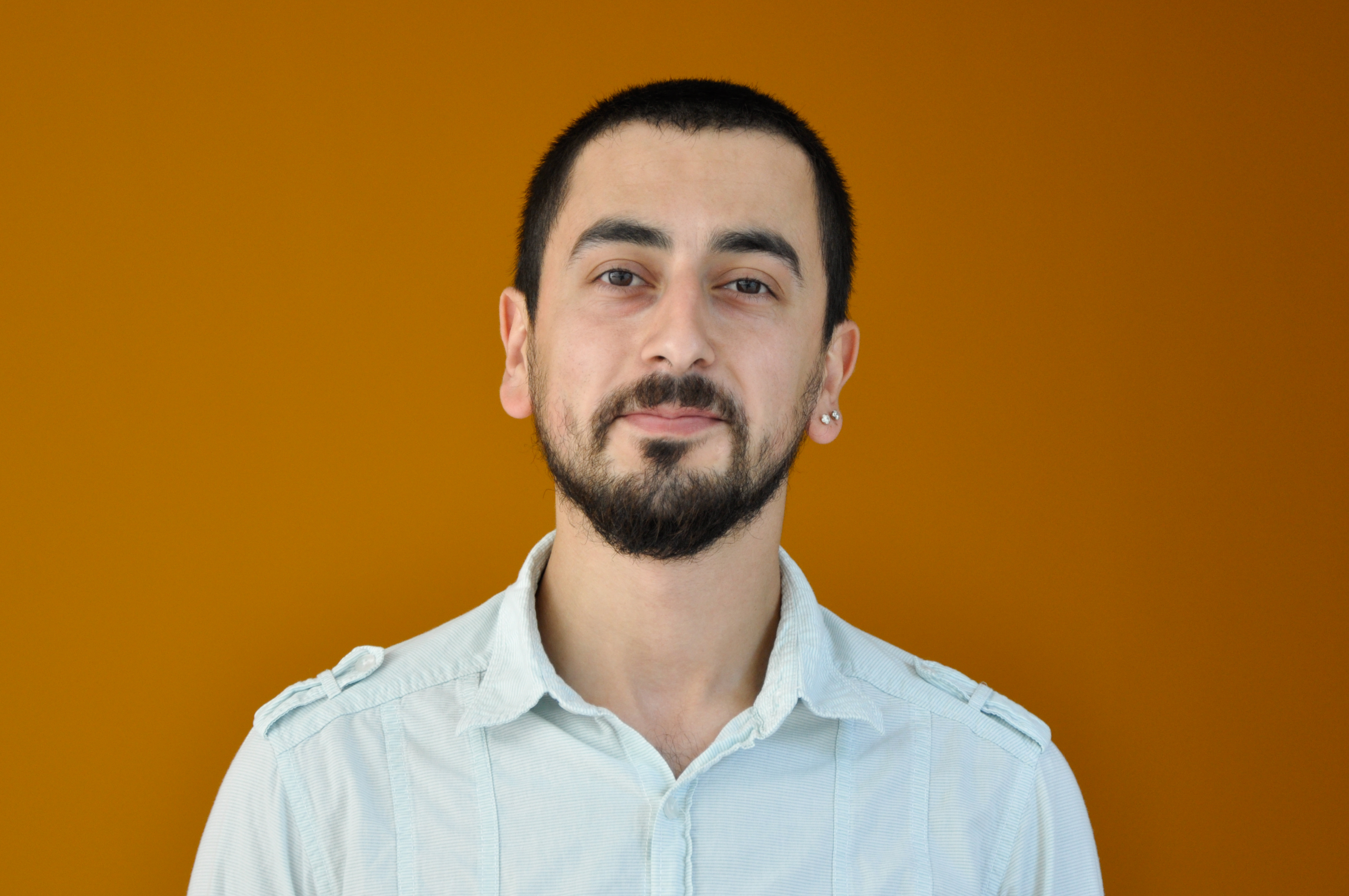
Omer Durak is a third year graduate student at Massachusetts Institute of Technology (MIT), The Department of Brain and Cognitive Sciences. His research at the Tsai Lab at MIT focuses on the role of neuropsychiatric risk genes on both embryonic and adult brain development. Durak was born in Gebze, Kocaeli and attended high school at the Türk Eğitim Vakfı İnanç Türkeş Özel Lisesi (TEVİTÖL). After his junior year in high school, he participated in the Research Science Institute summer program held at California Institute of Technology (Caltech). During the program, he worked in the Benzer Lab where he studied nociception in fruit fly larvae. After graduating high school in 2005, he started his undergraduate degree at Caltech majoring in Biology, concentrating on neuroscience/cognitive science. While an undergraduate, he was a member of the Sternberg lab studying evolution of the nervous system, mating behavior and nociception in C. elegans. Upon completion of his undergraduate degree, he became a research assistant at the Tsai Lab at MIT where he then decided to attend as a graduate student. He plans to build a career in academia by seeking post-doctoral training after completing of his Ph.D.
UNDERSTANDING EMBRYONIC BRAIN DEVELOPMENT IN AUTISM
Autism is a complex developmental disability that is typically characterized by social and communication difficulties, repetitive behaviors and intellectual disability. The prevalence of autism is approximately 1 in 110 children. Extensive research is necessary to understand underlying causes to effectively detect the disease before its onset and guide rational drug development. Although the underlying causes of autism are currently poorly understood, it is well accepted that autistic patients often display increased brain size and malformation. It is predicted that changes in brain size could be due to genetic mutations found in autistic patients. My study focuses on one of these mutated genes called CHD8, and its function in embryonic brain development. Our study suggests that CHD8 is necessary for proper cell division and neuronal size, which could underlie the changes seen in the autistic patient brain. Furthermore, we have identified a possible cellular mechanism through which CHD8 may exert its effects on brain development. Currently, we are testing genetic and pharmaceutical approaches to manipulate this mechanism to normalize the changes in the embryonic mouse brain. Our results have the potential to pave the way for future drug development.
